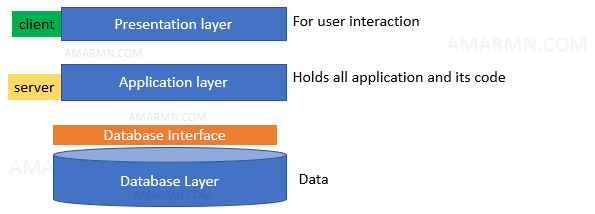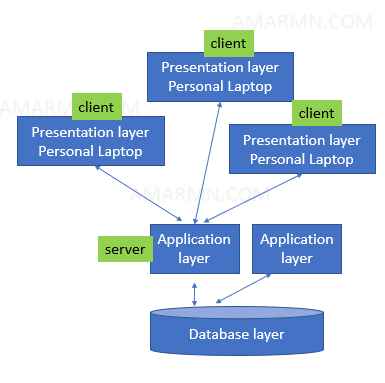
With SAP R/3 system, SAP moved towards 3-tier architecture.
A three-tier architecture is a client/server architecture, wherein we have three service layers Presentation layer, Application layer and Database layer. Each of these layers are developed and maintained as individual modules.

SAP Installation consists of a database server, typically on a UNIX based machine/system; one or more application server/s, each typically on a UNIX-based machine; and many window based presentation server or systems.
Three-tier architecture leads to highly scalable system. The system can support unlimited number of servers.
At the presentation layer we interact with SAP’s user interface, also known as SAP GUI ( Graphical User Interface ). With SAP GUI, users interact with SAP system and access SAP applications. Presentation layer communicates with Application layer. SAP logon needs to be installed on client to access SAP GUI.
Application layer holds all SAP ERP applications to meet various business functions. Application layer provides environment to execute SAP applications as well as ABAP code. Application layer communicates with Database layer to process data requested.
Database layer is where all persistent data is stored. The DB consists of a RDBMS database. In RDBMS, data is stored in tables. Tables consists of fields ( columns ) and holds data in row format.
